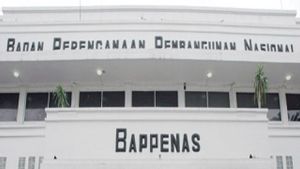
Jakarta - Supercomputers have held a highly valued position in the technology space. They are used for many things, including climate modeling, disease research, and nuclear science.
They are also used to run complex simulations involving many variables in the universe. More recently, supercomputers have been used to track the spread and mutation of the coronavirus.
Supercomputers are often ranked in terms of the number of computations per second. This so-called TeraFLOPS is a unit of computing power equivalent to one trillion (10¹²) floating-point operations per second.
Here are the supercomputers that are claimed to be the most powerful so far
Fugaku
Location: Riken Center for Computing Science, Japan
Cores: 7.630.848
Memory: 5.087.232GB
Processor: A64FX 48C 2.2GHz
Peak performance: 537.212 TFlops/sec
This supercomputer, developed by the Japanese government-backed research institute Riken. Claimed to be the fastest in the world for computing speed. Named Fugaku which means Mount Fuji, this computer was co-developed with Fujitsu Ltd. at the institute's facilities in Kobe. It is currently involved in researching potential drugs to fight the coronavirus.

Summit
Location: DOE/SC/Oak Ridge National Laboratory, USA
Cores: 2.414.592
Memory: 2.801.664 GB
Processor: IBM POWER9 22C 3.07GHz
Peak Performance: 200.795 TFlops/sec
Summit, launched in 2018, uses 4.608 compute nodes, each containing multiple IBM POWER9 CPUs and Nvidia Volta GPUs connected to Nvidia's high-speed NVLink. Each node has more than half a terabyte of coherent memory. Computers are capable of solving complex tasks in energy, artificial intelligence (AI), human health, and other areas of research.

Sierra
Location: Lawrence Livermore National Laboratory, USA
Cores: 1.572.480
Memory: 1.382.400 GB
Processor: IBM POWER9 22C 3.1GHz
Peak performance: 125.712 TFlop/sec
This IBM-made supercomputer combines two types of processor chips. Namely IBM's Power 9 processor and Nvidia's Volta graphics processing unit. Nuclear weapons scientists use it in nuclear weapons simulations as a substitute for underground testing. It helps assess the performance of nuclear weapons systems as well as nuclear weapons science and engineering calculations.

Sunway TaihuLight
Location: National Supercomputer Center in Wuxi, China
Cores: 10.649.600
Memory: 1.310.720GB
Processor: Sunway SW26010 260C 1.45GHz
Peak Performance: 125.436 TFlop/sec
This Chinese supercomputer has 40.960 many-core 64-bit RISC SW26010 processors designed in China based on the Sunway architecture. Each processor chip contains 256 processing cores.
The name translates as divine power, the light of Taihu Lake. From June 2016 to June 2018, it was the fastest supercomputer in the world. Computers are involved in modeling climate, weather, and earth systems, life science research, advanced manufacturing, and data analytics.

Perlmutter
Location: National Energy Research Scientific Computing Center, USA
Cores: 706.304
Memory: 390.176GB
Processor: AMD EPYC 7763 64C 2.45GHz
Peak Performance: 89.794.5 TFlop/sec
This supercomputer is based on the HPE Cray “Shasta” platform and is a heterogeneous system with GPU-accelerated nodes and only a CPU. It was named in honor of Nobel prize winner Saul Perlmutter.
Among its use cases are nuclear fusion simulation, climate projection, and materials and biological research.

SEE ALSO:
Selene
Location: NVIDIA Corporation, USA
Cores: 555.520
Memory: 1.120.000 GB
Processor: AMD EPYC 7742 64C 2.25GHz
Peak Performance: 79.215 TFlop/sec
Selene is a DGX SuperPOD powered by an Nvidia A100 GPU and an AMD Epyc Rome CPU in the DGX A100 form factor. Using Mellanox HDR InfiniBand as a system network.
The Selene platform supports a broad user community, such as supercomputer-scale continuous integration for software, research, "big iron AI" work (e.g., Megatron, ASR), and automotive.

Tianhe-2A
Location: National Supercomputer Center in Guangzhou, China
Cores: 4.981.760
Memory: 2.277.376 GB
Processor: Intel Xeon E5-2692v2 12C 2.2GHz
Peak Performance: 100.679 TFlop/sec
This supercomputer was developed by China's National Defense Technology University (NUDT) and is housed at the National Supercomputer Center in Guangzhou, China.
When first deployed, it had 16.000 computer nodes, each consisting of two Intel Ivy Bridge Xeon processors and three Xeon Phi coprocessor chips, one of the largest implementations of Ivy Bridge and Xeon Phi chips in the world.
It runs on Kylin Linux, a version of the operating system developed by China's National University of Defense Technology (NUDT).

The English, Chinese, Japanese, Arabic, and French versions are automatically generated by the AI. So there may still be inaccuracies in translating, please always see Indonesian as our main language. (system supported by DigitalSiber.id)















